SAFT – A World Leader in High Technology Batteries.
Total Battery offers Saft battery lines of Lithium-thionyl chloride Li-SOCl2, Lithium-sulfur dioxide Li-SO2, Lithium-manganese dioxide Li-MnO2, NICD, and NIMH. These batteries are used to power various radio-communications, emergency and security systems, tollgates, meters, tracking and localization, Aero-Space, Medical, Aviation, and military applications. We offer volume discounts as well.
Nickel-Cadmium (Ni-Cd)
Nickel-cadmium cells have an anode (negative) in cadmium hydroxide and a cathode (positive) in nickel hydroxide, immersed in an alkaline solution (electrolyte) comprising potassium, sodium and lithium hydroxides. The cells are rechargeable and deliver a voltage of 1.2 V during discharge.
Saft and its subsidiaries have been making nickel-cadmium batteries for over 100 years, addressing a huge variety of professional and industrial applications, with capacities from 0.1 to 1500 Ah. Several different electrode technologies can be used, with pocket-type, sintered plate, foam and Saft’s recent proprietary PNE (for the VNT range) anodes, and pocket-type, sintered plate or PBE cathodes (Plastic Bonded Electrodes). Nickel-cadmium cells can be sealed or open, and are available in low-maintenance and zero-maintenance versions.
Sealed cells are cylindrical in shape, in nickel-steel cans . Open cells are prismatic in shape, with casing in plastic (possibly flame retardant) or stainless steel or nickel steel. Nickel-cadmium batteries have a legendary reputation for robustness, reliability and service life. This is the benchmark technology for difficult and demanding applications: operating temperatures from –40 °C to +60 °C (because the electrolyte has a very low freezing point), excellent cycling capability (up to 3,000 cycles), long storage life, and low or zero maintenance. Because of the structural materials they use, nickel-cadmium batteries are exceptionally robust, and exempt from risk of sudden failure. And they can be made with very thin electrodes, for high-power units. Saft makes an increasing proportion of its nickel-cadmium batteries using cadmium from recycled batteries.
Nickel Metal-Hydride (Ni-MH)
Nickel-metal hydride cells have an anode (negative) in a metal alloy capable of absorbing and desorbing hydrogen, plus a nickel hydroxide cathode (positive), immersed in an alkaline electrolyte solution of potassium, sodium and lithium hydroxides. Nickel-metal hydride cells are rechargeable and deliver a voltage of 1.2 V.
This kind of cell can be sealed, in smaller capacities (< 60 Ah), or open, in larger capacities (> 60 Ah). The cells are maintenance-free but require precise charge level monitoring, to control gaseous exchanges with the outside and thus water consumption (for open cells, only slightly pressurized, owing to size). Charge monitoring also helps minimize heating under charge, to maximize capacity and service life.
Sealed cells are in cylindrical shape with nickel steel can and open cells are prismatic in shape, with casing in flame retardant plastic, with fluid circulation for temperature control.
Nickel-metal hydride cells have very similar properties to nickel-cadmium units, and share the same manufacturing processes and most components, except of course the hydridable anode material. They have excellent energy density by volume (up to 140 Wh/L) and are ideal for high-capacity maintenance-free units.
Sealed cells are used in many mobile and fixed professional and industrial applications. Open cells are used for traction and back-up power in public transport (trams, trains) and industrial vehicles, in stationary back-up systems and in photovoltaic applications.
Nickel-carbon capacitor (Ni-C capacitor)
The Nickel-carbon capacitor is an electrochemical hybrid capacitor in which charge and discharge can be repeated by potassium ions adsorption at the negative electrode, and by electrochemical reaction at the nickel hydroxide positive electrode. The positive electrode is comprised of nickel based materials as for alkaline batteries, and the negative electrode is comprised of carbon materials. The electrolyte used in nickel-carbon capacitor is an alkaline electrolyte as for alkaline batteries.
Lithium-thionyl chloride (Li-SOCl2)
Lithium-thionyl chloride cells have a metallic lithium anode (the lightest of all the metals) and a liquid cathode comprising a porous carbon current collector filled with thionyl chloride (SOCl2). They deliver a voltage of 3.6 V and are cylindrical in shape, in 1/2AA to D format, with spiral electrodes for power applications and bobbin construction for prolonged discharge.
Lithium-thionyl chloride cells have a high energy density, partly because of their high nominal voltage of 3.6 V. Bobbin versions can reach 1220 Wh/L and 760 Wh/kg, for a capacity of 18.5 Ah at 3.6 V in D format. Because self-discharge is extremely low (less than 1% per year), this kind of cell can support long storage periods and achieve a service life of 10 to 20 years. For different applications, the cells can be fitted with various types of connectors and assembled in various battery arrays, including a number of standardized versions. Saft products address a broad spectrum of fixed and mobile civil and defence applications.
Lithium-sulfur dioxide (Li-SO2)
Lithium-sulphur dioxide cells have a metallic lithium anode (the lightest of all the metals) and a liquid cathode comprising a porous carbon current collector filled with a sulphur dioxide (SO2) solution. They deliver a voltage of 2.8 V and are cylindrical in shape, in ½ AA to double-D format, with spiral electrodes.
Lithium-sulphur dioxide cells have a high energy density (250 Wh/kg) and a good capability for delivering repeated bursts of high power (up to 400 W/kg). This cabability derives from the spiral construction and is utilised in most of the applications addressed by this type of cell. This kind of cell is mainly used in defence applications, though civil applications also abound.
Lithium-manganese dioxide (Li-MnO2)
Lithium-manganese dioxide cells have a metallic lithium anode (the lightest of all the metals) and a solid manganese dioxide cathode, immersed in a non-corrosive, non-toxic organic electrolyte. They deliver a voltage of 2.8 V and are cylindrical in shape, in 1/2 AA to D format, with spiral electrodes.
Lithium-ion (Li-ion)
Lithium-ion electrochemistry involves the use of lithium insertion compounds. In a lithium-ion cell, the negative electrode (anode) is graphite and the positive electrode (cathode) is a lithium-bearing metal compound. Li-ion cells have an exceptional cycling aptitude owing to the stable electrode structure: charging and discharging involves exchange of lithium ions between the electrodes via the electrolyte. Because of the high output voltage (up to 4.2 V), a non-aqueous electrolyte is used, mainly comprising a mixture of organic carbonates.
Various active materials for the positive can be used: lithium cobalt oxide, lithium nickel oxide, lithium aluminium oxide, lithium manganese oxide, or lithium iron phosphate. Saft has unparalleled experience of more than 15 years with doped nickel oxide (NCA), which offers the best cycling capability and service life, as called for in professional applications.
Saft has developed large and medium-sized batteries in cylindrical and near-prismatic shapes, with various energy-power trade-offs, from 150 W/kg with full discharge in 2 hours to 65 Wh/kg with full discharge in 15 seconds. Other remarkable properties of these products include a faradic efficiency close to 100%, long calendar life (over 20 years at ambient temperature), low self-discharge (under 5% per year), operating temperature range from –30 °C to +60 °C, and charge level gaugeable by measuring voltage.
Silver chloride-magnesium (AgCl-Mg)
Silver chloride-magnesium cells have a magnesium anode and a silver chloride cathode. Practical output voltage is 1.6 V. They are used in a Volta stack for underwater torpedo propulsion. Seawater acts as the electrolyte, and is only fed into the cell core when the device is fired, which means the cell is inert and thus risk-free before firing. Because all components are in solid form, prolonged storage (over ten years) is possible with no deterioration in performance. Temperature control during discharge is by renewal of the electrolyte. AgCl-Mg batteries have high energy density and power consistent with torpedo range and speed.
Silver-zinc (Ag-Zn)
Silver-zinc cells provide the basis for both primary and secondary (rechargeable) batteries. In cells for primary batteries, the anode is zinc and the cathode is silver oxide. In cells for secondary batteries, the anode is zinc oxide and the cathode is silver. In both cases, the electrolyte is based on potassium hydroxide. The output voltage is 1.65 V. The main applications for silver-zinc cells are in defence (torpedoes). Other applications include guiding systems, steering and pump activation on the Ariane launch vehicle.
In military applications, rechargeable batteries are used for exercises and primary batteries for operations. For reasons of safety and performance (shelf life over 8 years), the batteries are only activated, by electrolyte injection, at the last minute. Silver-zinc batteries have a high energy density and power.
Silver-oxide Aluminium (AgO-Al)
Silver oxide-aluminium cells have an aluminium anode and a silver oxide cathode (degree of oxidation II). They are used in a Volta stack for underwater torpedo propulsion. Because the sodium hydroxide electrolyte solution reacts with the aluminium, it is prepared from solid sodium hydroxide in solid form and only fed into the cell core when the device is fired. Prior to introduction of the electrolyte, the cell is inert and thus risk-free. Because all components, including the electrolyte, are in solid form, prolonged storage is possible with no deterioration in performance. Temperature control during discharge is by renewal of the electrolyte. AgO-Al batteries have high energy density and power consistent with torpedo range and speed.











